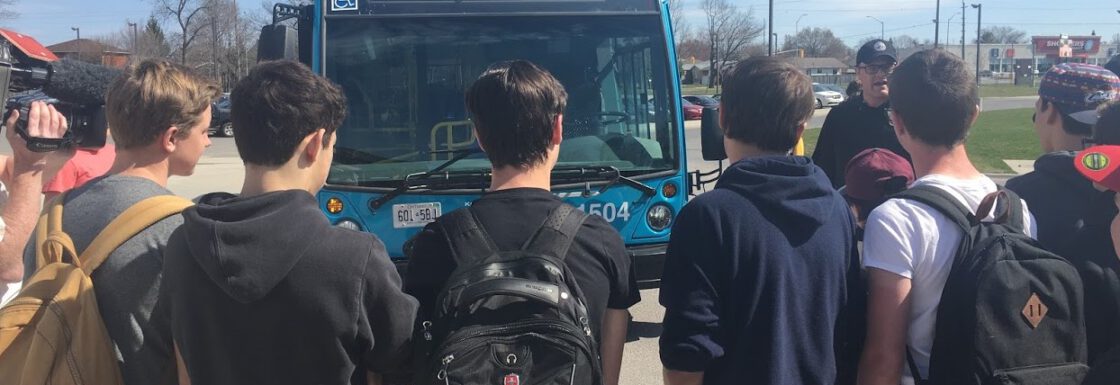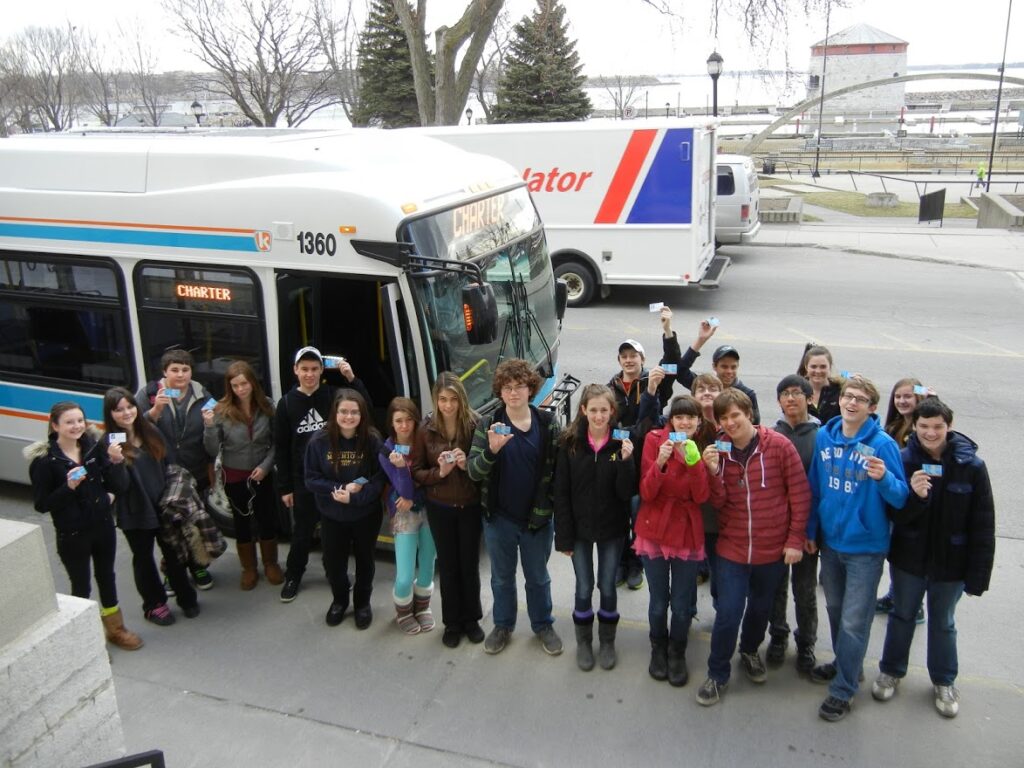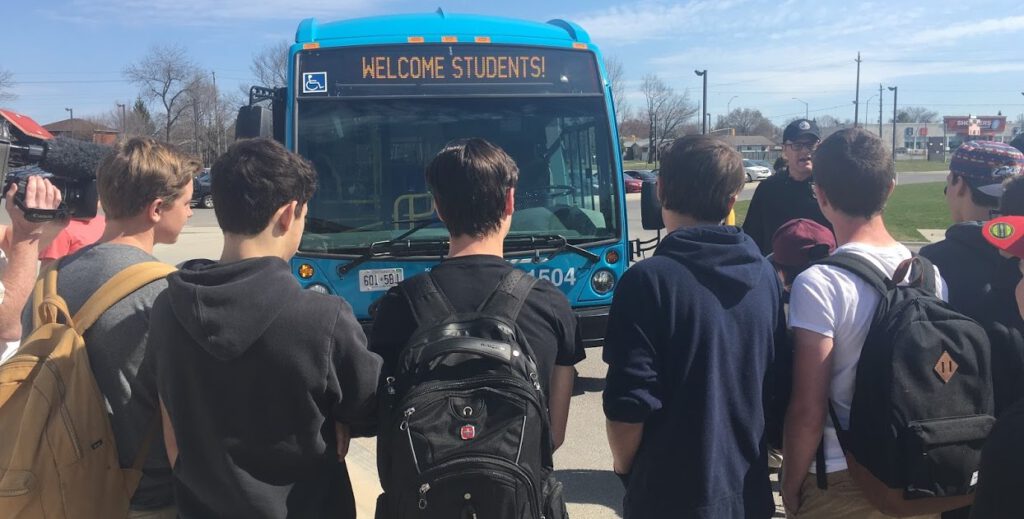Kingston Transit High School Bus Pass Project: Limestone District School Board & Kingston Transit

Projects Sponsor
Kingston developed a simple but powerful model to transform public transportation and it starts with training youth. On-bus orientation and free passes have increased high school ridership from 28,000 to close to 600,000.

“I always start the students off in front of the bus. This is where I show them how to use the bike rack,” says Dan Hendry of the on-bus orientation program he launched in Kingston, Ontario, “I tell them the true story of when I first used it, I had never taken my bike on the bus and I actually had a popped tire… the bus pulled up I proceeded to get in front and I looked at the bike rack wondering how to do it, with forty people looking at me, cars zooming by, the bus driver unable to come off and assist, I was sweating, my helmet was flopping around it was intimidating, even as a 30 year old.”
It’s a highly relatable story––a great way to break the ice. It tells you a lot about the motivation and philosophy behind the transit orientation project, which Mr. Hendry’s initiative.
In 2012 Kingston’s City Council recognized the benefits public transportation offers young people and decided to allow grade nines free access to Kingston Transit. Mr. Hendry a school board member who worked for the city and noticed that the students who wanted to get their free pass had to take their student ID to one of two locations along with an itinerary showing how they’d use the pass.
These were the parameters the city established, however, many students did not regularly use public transportation and even if they were familiarly, they did not get their ID until November, well into the start of the school year. These seemingly minor tasks could easily be insurmountable barriers to the exact students the program was supposed to help.

Needing a bus to get a bus pass could be the “I need my glasses to find my glasses” of the high school years. This got Mr. Hendry thinking, “When was the last time I changed my behaviour or excelled in something that someone didn’t guide or help me with?” As Mr. Hendry saw it, nobody was teaching the students how to use transit. Nobody was even really explaining why they would want to use transit describing to them the social, economic, health and environmental benefits. Nobody was letting them meet a driver and nobody was showing them how to stop the bus or get on and off it once they had. Perhaps most importantly, nobody was highlighting the freedom public transit can grant young people, and not-so-young people, for that matter.
What was needed was a transit introduction, a little transit mentorship, something to demystify the bus and that’s what the project delivers. Each September a transit bus is visits each high school, where grade nine students are taught the ins and outs of public transit, while being given the opportunity to get their free bus pass from the comfort of their own schoolyard that very day.
The timing of this orientation is pivotal to shifting away from car culture. The fact is, that if you miss the bus in grade nine, there might not be another one coming along for a while. Grade nine is a prime age to jump on. It’s a time when many students are going through some major life transitions and increasingly want and need the ability to travel on their own, but most are still years away from being able to get a driver’s license.
The Kingston High School Transit Pass Program shows what can happen when that moment is seized. Orientation and free passes have proven to be effective behavioural change tools; Kingston’s high school ridership has increased from 28,000 to close to 600,000 annually. Student feedback indicates that the transit pass facilitated more independent trips and helped students participate in more activities. A subsequent research study concluded that the transit pass is an important stimulant for travel independence for high school students and suggested that the program could be applied to other mid-sized North American municipalities.
By framing the ability to use public transit as an essential life skill and by giving students information through an authentic, low pressure experience the program builds confidence and helps eliminate some of the barriers that might prevent students from taking transit, in high school, in their hometown and beyond.
Using transit, after all, is a bit like riding a bicycle and the end of Mr Hendry’s bussing his bike story matters here, “I know now that it is a simple thing to do – pulling it down, putting your bike on and locking in place – but without a safe and no-stress opportunity to learn – many new riders just won’t try.”













